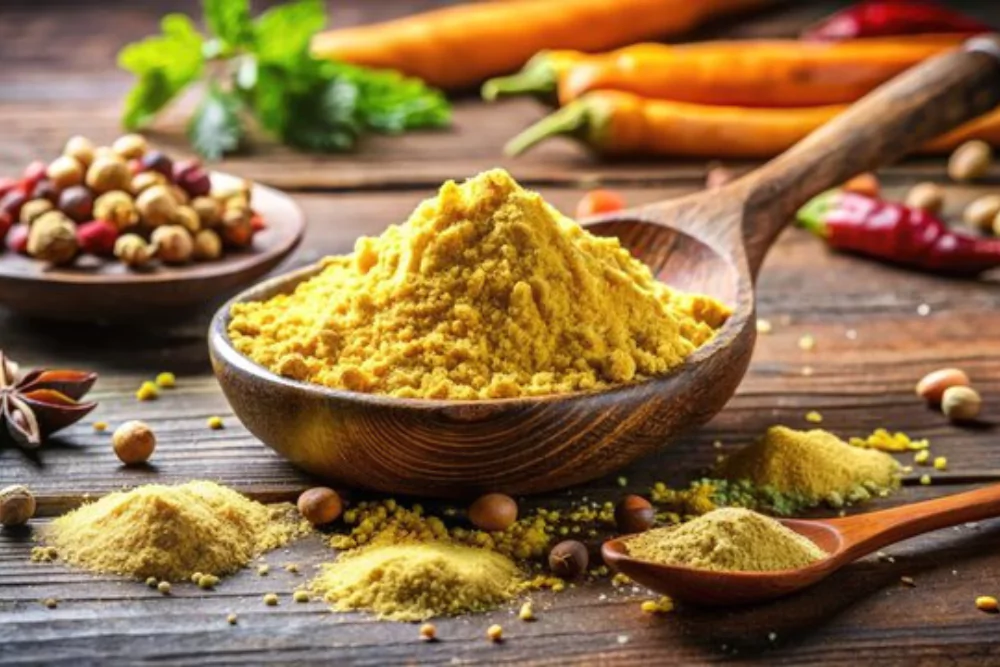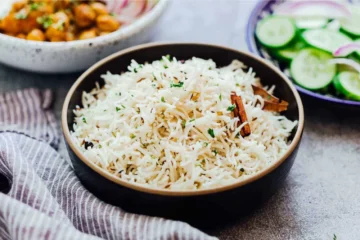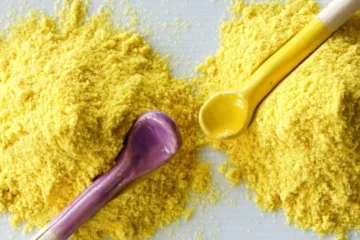Hing (asafoetida) is a powerful spice that adds depth to Indian cuisine. But if cooked incorrectly, it can ruin an entire dish. Let’s uncover the most common mistakes people make when cooking with hing and how to use it properly to preserve its unique flavor.
1. What are the most common mistakes people make when cooking with hing?
Short Answer: The most common mistakes include burning hing, adding it at the wrong time, using too much, or skipping tempering in hot oil or ghee.
Detailed Answer:
- Adding it directly to food: Hing must be tempered in hot oil or ghee to release its aroma. Adding it straight to a dish can make it taste raw and harsh.
- Burning it: If left in hot oil too long, hing can burn within seconds, turning bitter and ruining the base of the dish.
- Using too much: Hing is extremely potent. Even an extra pinch can overpower other ingredients and result in an unpleasant taste.
- Using stale hing: Old or improperly stored hing loses its potency and aroma, impacting flavor quality.
- Skipping it in low-fat dishes: Hing needs some form of fat to bloom. Using it without oil or ghee renders it ineffective.
2. Why does hing sometimes taste bitter or overpowering in recipes?
Short Answer: Hing tastes bitter or overpowering when it’s burnt, overused, or not dissolved properly in hot fat like oil or ghee.
Detailed Answer:
- Overheating during tempering: Hing burns quickly. Overcooking it leads to a bitter, sharp flavor that overpowers your dish.
- Wrong quantity: A pinch too much can dominate the dish. The correct quantity should be used as per recipe size—usually 1/8 tsp or less for 4 servings.
- Skipping blooming step: When hing isn’t bloomed in oil or ghee first, it doesn’t disperse properly and clumps, leaving an intense, raw aftertaste.
- Low-quality hing: Cheap or adulterated hing lacks finesse and tends to taste sharper or bitter.
3. Should I use powdered or resin hing, and does it affect the cooking process?
Short Answer: Resin hing is purer and more potent than powdered hing. However, powdered hing is more convenient for daily cooking.
Detailed Answer:
| Form of Hing | Potency | Usage | Cooking Process |
|---|---|---|---|
| Resin Hing (Raw form) | Very High | Needs to be crushed and dissolved | Should be dissolved in warm water or fried in oil |
| Powdered Hing (Compound) | Moderate | Convenient, ready to use | Directly added during tempering |
- Resin hing: Highly potent. Only a tiny amount is needed. Requires manual crushing and dissolving, best suited for experienced cooks.
- Powdered hing: Easily available and user-friendly. Slightly diluted with flour or gum, making it milder.
- Flavor difference: Resin has a richer aroma but needs extra care during cooking. Powdered hing is more forgiving and consistent.
4. What’s the right way to temper hing to avoid ruining my dish?
Short Answer: Always bloom hing in hot oil or ghee for just a few seconds until it releases aroma—do not overcook it.
Detailed Answer:
- Heat oil/ghee properly: Let your fat reach medium heat. It should be hot enough to sizzle but not smoke.
- Add hing and stir: Add a pinch of hing and stir immediately. Within 3–5 seconds, it will release a strong aroma.
- Add next ingredients quickly: To prevent burning, follow it up with mustard seeds, cumin, or curry leaves right away.
- Ideal timing: Add hing at the start of tempering—not at the end or after liquid has been added to the dish.
5. How can I fix a dish if I’ve added too much hing?
Short Answer: To fix too much hing, dilute the dish by adding more of the base ingredients or balance it with acidity and sweetness.
Detailed Answer:
- Double the recipe base: Add more of the main ingredients like dal, vegetables, or water to dilute the intensity.
- Add acidity: A small amount of lemon juice, yogurt, or tomatoes can help cut through the strong taste.
- Include sweetness: A pinch of sugar or jaggery balances bitterness and helps round out flavor.
- Add cream or ghee: Fats help mellow strong spices. A spoon of cream, ghee, or coconut milk can tone it down.
- Use potato or rice: Add a boiled potato or a handful of rice to absorb excess flavor. Remove it before serving.
Conclusion
Hing is a wonderful ingredient when used right, but easy to get wrong. Overcooking, using the wrong form, or skipping proper tempering can make your food bitter or overpowering. Stick to proper timing, use it sparingly, and always bloom it in fat for that signature aroma. Knowing how to fix common hing mistakes will save your dish and elevate your cooking.





